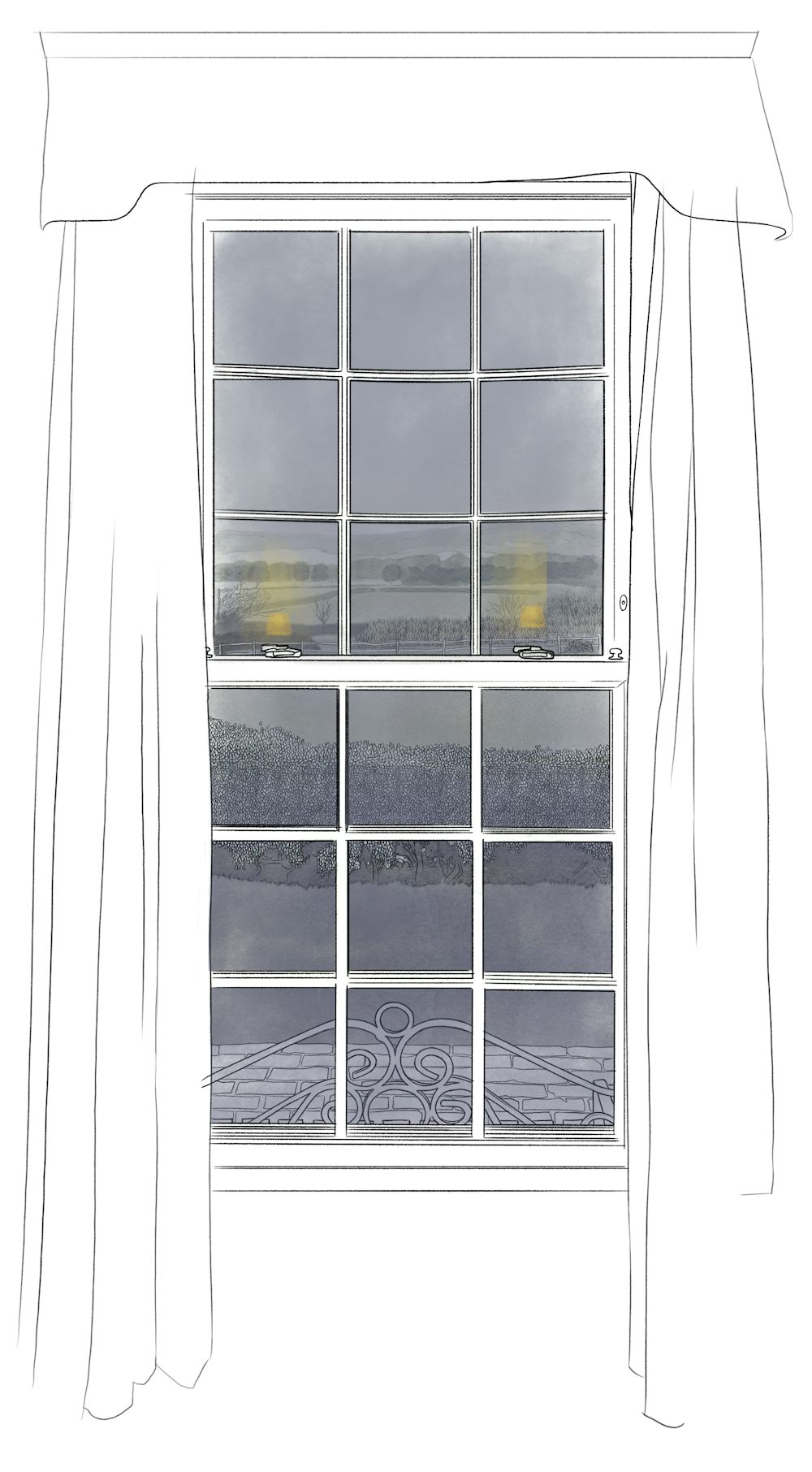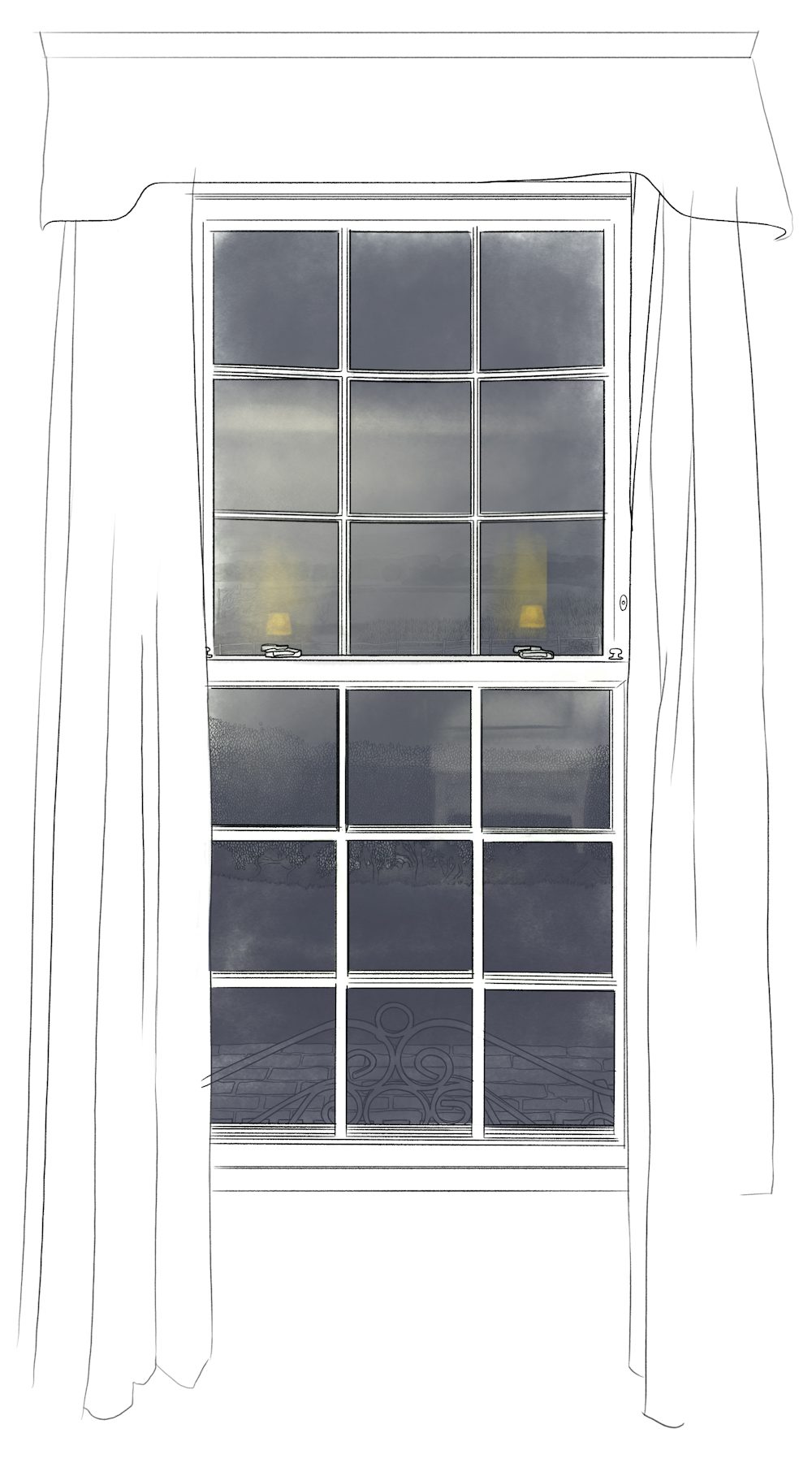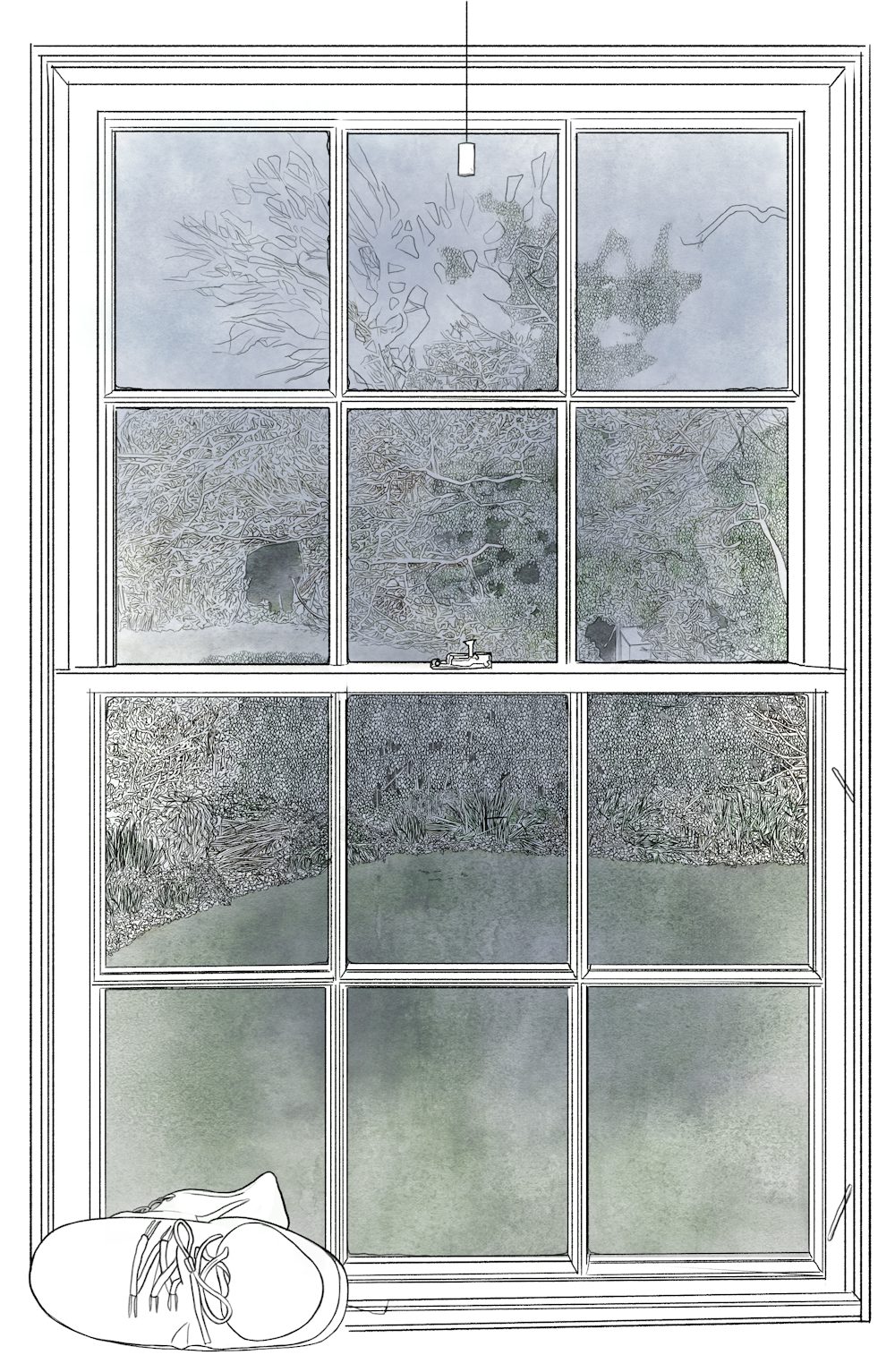Rachel Waller
"The Physical Frame"
Keywords: borders/boundaries, drawing, moving image, narrative, domestic space
In my proposal, I am seeking to investigate the everyday life in different settings. I was first interested in researching the boundaries one can face in a day, be it perceived territories or physical obstacles. I decided to narrow my focus to a singular boundary: the built frame – windows. Windows are built for light, ventilation, and/or the view they offer to the inhabitant. They are an interesting boundary because they allow for interaction through different spaces and act as a stationary frame by which a dynamic perspective can inhabit. I am looking to interrogate what lies beyond the window in various chosen settings in order to contrast and compare the various modes of living, with the frame acting as a constant and constraint.
My project is therefore seeking to mediate the everyday life by showing it exclusively framed through domestic windows. I have collected data – personal written accounts and photographs at hourly timed intervals over the space of a day – of six chosen windows. These windows are situated in three different domestic locations (urban, suburban, and rural), with two windows chosen at each of these locations. These windows all have different views to each other (front and back of the house) and have had a significant impact on my day-to-day life over the years.
This data has been re-imagined into ethnographic illustrative studies to express my perception of place, imbue feelings, emphasise certain aspects, all while not necessarily depicting reality. By transforming the data collected into small ethnographic illustrations, this will show my own interpretations of both the view and its atmosphere. These illustrations would then become the basis of the stop-motion film, with the frames arranged as a collage on a single screen, creating a strange landscape beyond where these different environments meet. By having all the perspectives composed in a single screen, the viewer will be able to focus more on the perspectives as a collection, to be able to contrast and compare.
I believe that mediation of the everyday through a frame is best curated by the creation of a stop-motion film on loop. By animating the frames’ contents over the course of a looped day, changes and similarities can be seen, and perceived temporality could also be explored by deliberate video editing. Chris Marker’s La Jetée film shows that considered timing and pauses can have massive effects on the atmosphere of still images within stop motion, so this would also be explored.
Overall, the project’s aim in creating a stop-motion film is trying to mediate the everyday further than just a change in medium (from photography to illustration), by also manipulating context and temporality. I feel the domestic setting is a universal topic, so I want to be able to express my perceived reality while allowing the viewer to take their own stance.









